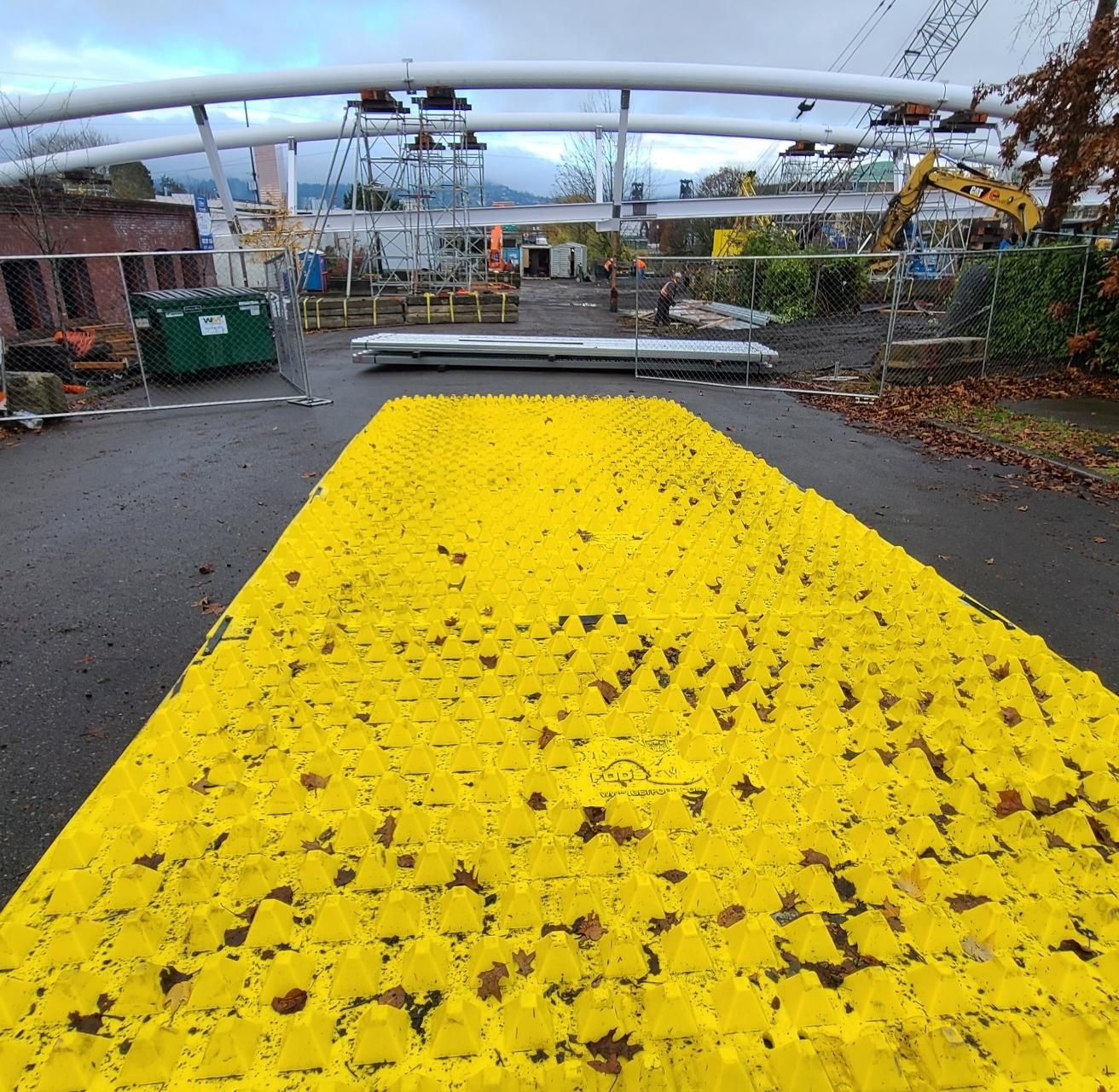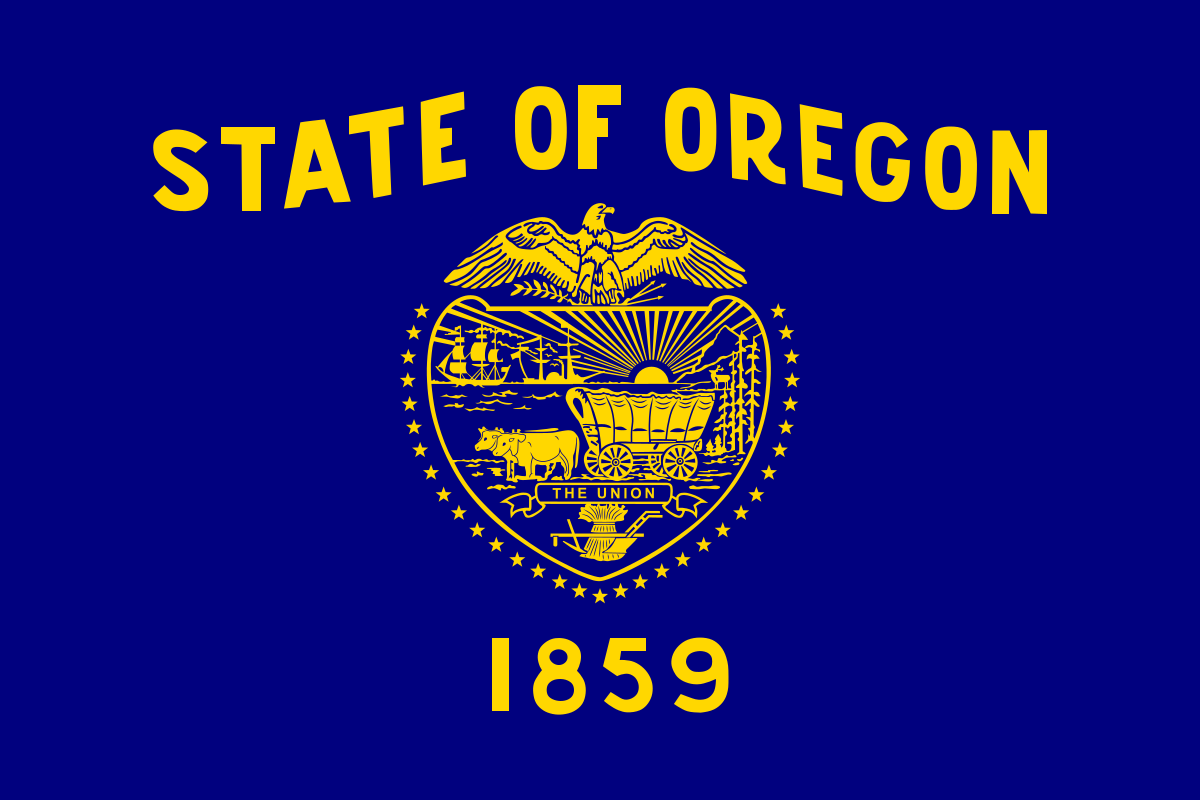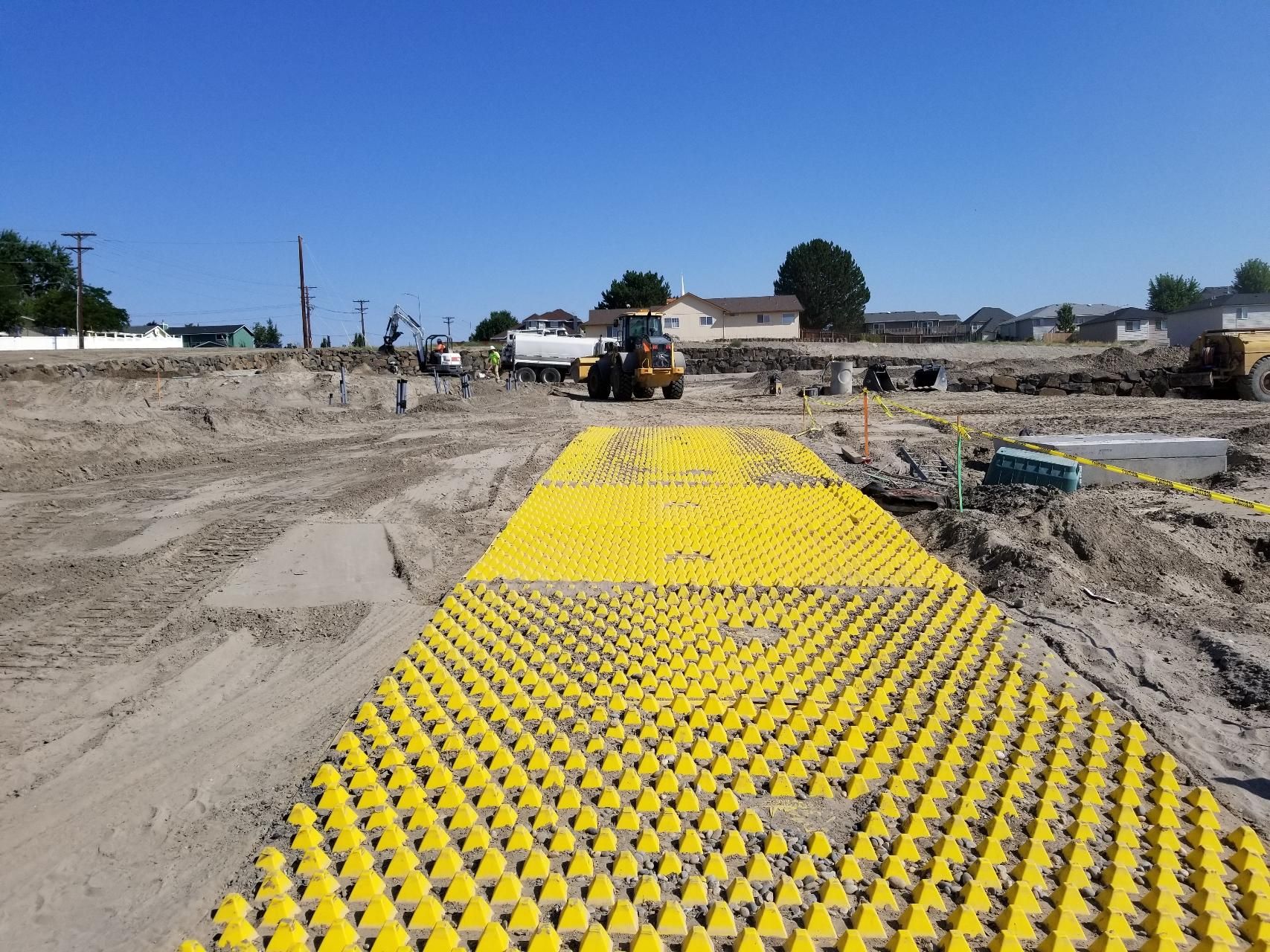Oregon Gravel Construction Entrance BMP Detail
With nearly four hundred miles of rugged coastline on the Pacific coast, Oregon is home to stunning landscapes and oceanic views. The clear cool water is enjoyed by thousands of residents and visitors each year and creates a vast habitat for an array of wildlife. The Columbia River is North America’s largest flow of fresh water into the Pacific Ocean and has been the cultural and economic center of the region for generations. It is essential to maintain the heath of the water that flows through Oregon, and it is the responsibility of residents, visitors, businesses, and government to work to improve the quality of drainage throughout the state.
Oregon NPDES Water Quality Permits
In order to protect the rivers, lakes and coastline throughout the state, Oregon’s Department of Environmental Quality (ODEQ) administers the National Pollutant Discharge Elimination System (NPDES) permit program established by the Clean Water Act. The NPDES permit program is designed to establish and enforce sediment containment strategies on industrial, construction and municipal operations. The permit program requires all operators to obtain a permit before discharging any water in the rivers, lakes, or stormwater drains which drain into surface waters. Regulatory permits require control measures to minimize, treat or contain the stormwater runoff from construction sites into the surface waters.
Applications for NPDES stormwater permits are reviewed by the Oregon Department of Environmental Quality (ODEQ), however, permits for operations on tribal or federal ground are deferred to the federal EPA. State issued permits are required for any construction site affecting one or more acres, and the most operations will apply for the 1200-C Construction Stormwater General Permit. When applying for a permit, contractors and engineers must create an Erosion and Sediment Control Plan (ESCP), also called a Stormwater Management Plan (SWMP), to submit with the permit application. ODEQ creates a handbook and publishes resources to aid in the development of the ESCP.
An ESCP identifies potential sources of pollution and sedimentation that will exist on the job site. The plan also explains each technique or Best Management Practice (BMPs) that will be used to mitigate the pollution and prevent contaminants from entering storm drains or surface waters. Often the first BMP that is installed is a Construction Entrance BMP which is used to prevent vehicle sediment tracking onto paved roadways at egress and ingress points.
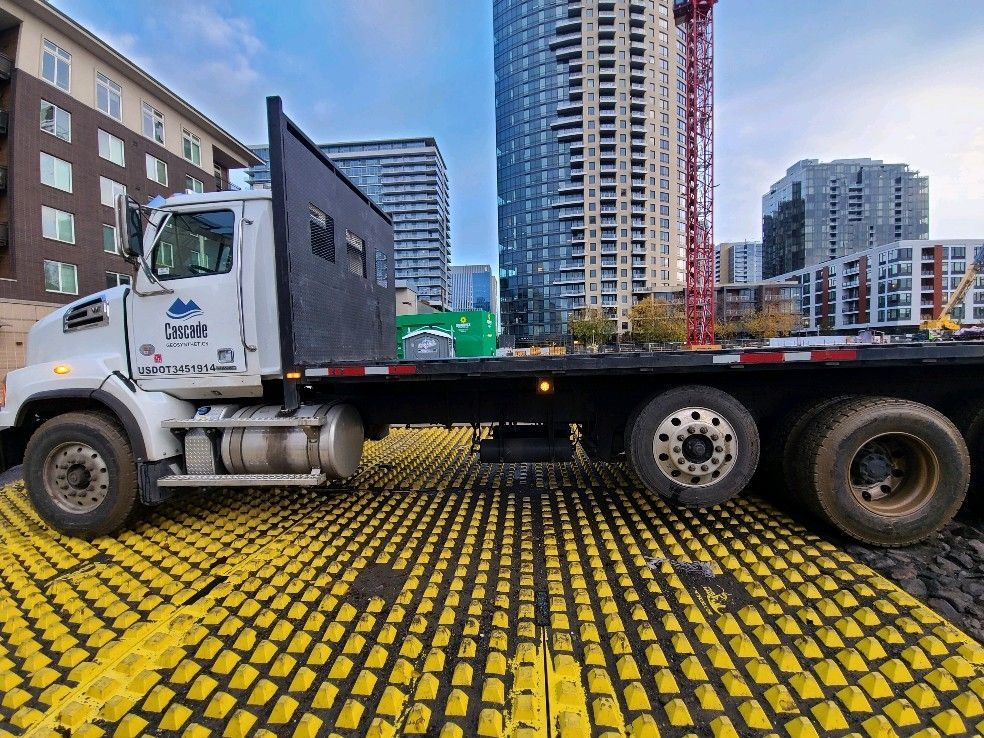
Gravel Construction Entrance - ODEQ E&S Manual
The Construction Stormwater Best Management Practices Manual issued by the ODEQ includes common BMP technique instructions on the set up and maintaining of the egress/ingress at a construction site. It describes a traditional gravel pad as well as pre-fabricated Rumble Tracks and wheel wash systems as options for sediment trapping.
Gravel entrances are consist of a driveway structure consisting of aggregate over a geotextile fabric. The handbook recommends that gravel entrances be installed with minimum dimensions of 50’ in length, 20’ in width, and 10” in depth. The entrance should also include a wide turning radius and larger vehicles should also be taken into consideration when designing the turning zones of the construction entrance. Geotextiles must be used to separate the rock from the native soil, to stabilize and prevent aggregate from sinking into the soil. The aggregate should be 4–6-inch diameter quarry spalls. Regular maintenance is necessary to keep the effectivity of the rock pad and prevent sediment from tracking into the roadway. When sediment does track onto the roadway, contractors must clean the road using dry methods such as vacuum sweeping.
As the job progresses, the stone may become laden with sediment and mud. When the entrance is no longer effectively preventing tracking, the entrance must be top dressed with additional rock or an additional BMP must be installed.
Wheel Wash
When the gravel construction entrance is not sufficient to mitigate track out, a wheel wash may be installed. Wheel washes are simple pressure washers placed at ingress/egress points and used to release large sediment clinging to the vehicles exiting the site. The discharge water from the wash zone must be treated to assure that no pollutants drain into the stormwater system. The ODOT manual further outlines the advantages and disadvantages to this system in section 3.4.2 of the Erosion Control Manuel. One of the most notable advantages include the ability of the water pressure to remove and therefore neutralize the spread of noxious weed seed from the site. Disadvantages to this method include the need for a water supply and the labor required to use to wash system.
Shaker Rack or Rumble Track
Another method that is mentioned in the handbook is the use of a rumble track. These are prefabricated steel structures designed to reduce the tracking of harmful material out of the construction area. These steel structures use rows of angle iron or steel bars to shake vehicle tires and dislodge debris. Various types of shaker racks can be installed with an optional sediment pit below the system to catch loose mud. These systems are often installed over paved areas and can be reused.
Rumble Tracks used in areas with excessive sediment tracking will require regular cleaning. Depending on the design, cleaning may involve moving the structure with equipment and cleaning out the sediment trap, or removing debris from the surface of the structure.
FODS Vehicle Trackout Control Mats
FODS Trackout Control Mat System offers a unique design to effectively remove mud and other debris from vehicle tires. Compared to the steel shaker racks, FODS uses pointed pyramid shaped structures to deform and flex vehicle tires in multiple directions. This unique design enables maximum performance on all vehicle tire sizes.
These durable mats are environmentally friendly and are reusable and 100% recyclable after their 10+ year service life. The FODS Trackout Control Mat system is designed to be installed over dirt, asphalt or concrete and do not require excavation prior to installation. FODS can be set up in less than 30 minutes, and can be easily relocated for each phase of the project.
Installation, removal, and maintenance can be completed without the use of heavy equipment. Maintenance is often competed using a skid steer with a broom attachment or manually using a FODS shovel.
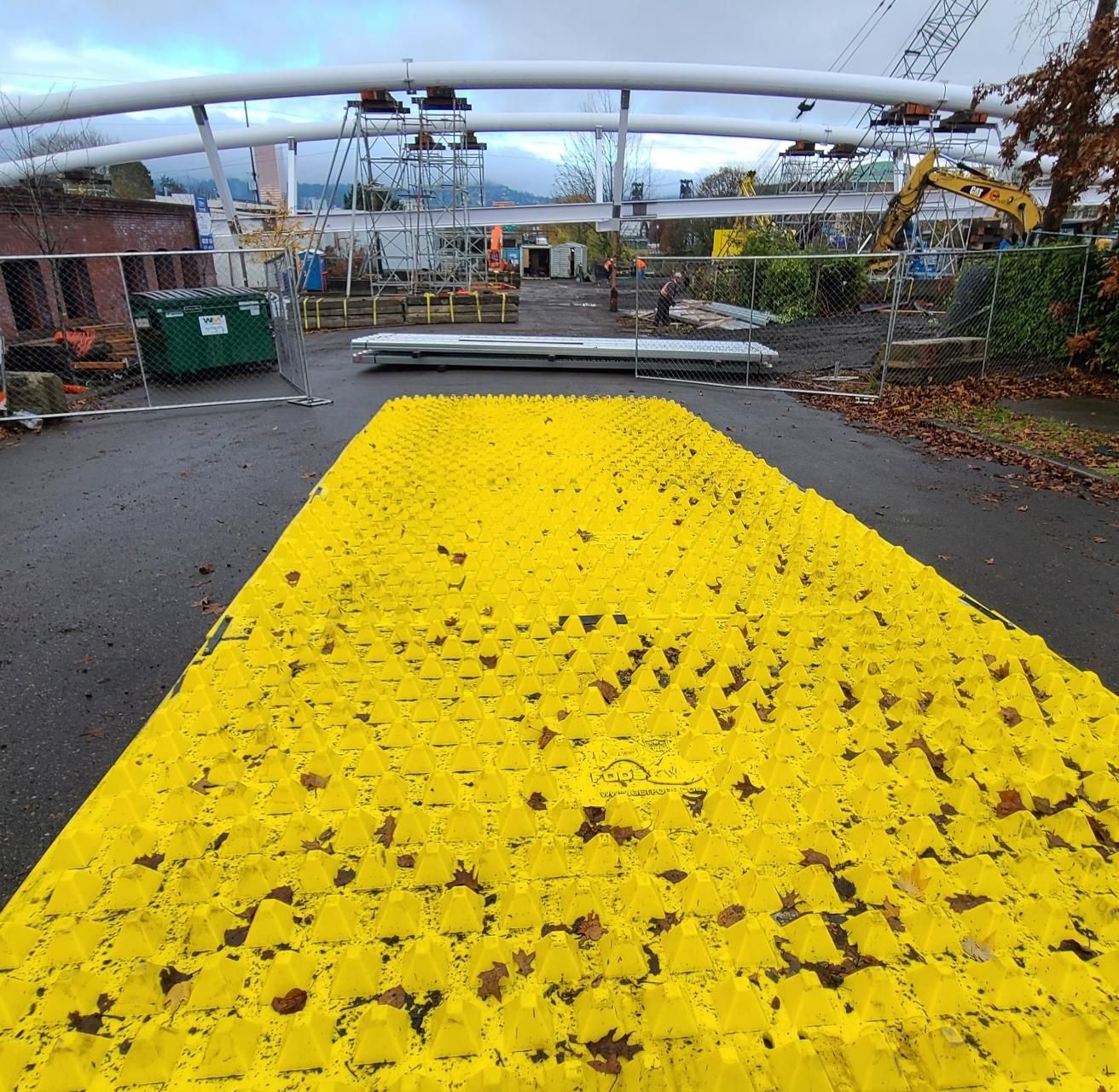
FODS Approved By Oregon DOT
FODS Trackout Control Mat System has been approved by the Oregon DOT for use on projects across the state. The modular FODS mats systems enabled contractors to relocate the entrance during each phase of the project and reduce the cost with each deployment.
Because the FODS system does not use rock, this effective BMP can also help to reduce the risk of rock entering the active lanes of travel during construction.
FODS fulfills the requirements listed in the Oregon DOT 2018 Boilerplate Special Provisions Section 00280 Erosion and Sediment Control.
00280.16(a) ConstructionEntrances - Add the following bullets to the end of the bullet list:
- Prefabricated Construction Entrance: Furnish reusable prefabricated construction entrance mats (track out mats) with the following characteristics:
- Track out mats consisting of irregular driving surface provided by ridges, knobs or pyramidal extensions (protrusions) not less than 2 1/2 inches height that collects dislodged material off Equipment tires and surface below protrusions.
- Modular and designed to be fixed together into widths and lengths as needed and anchored in place.
- High visibility coloration
- Chemical and UV resistant
- Crush strength not less than 20,000 pounds
Contact us for more information about using FODS in the state of Oregon.
Additional Resources:
Oregon DEQ Stormwater Permit Application Forms and Permit Fees
Construction Stormwater Best Management Practices Manual
ODOT Erosion Control Field Manual
2018 Boilerplate Special Provisions
2018 Boilerplate Special Provisions - Section 00280 - Erosion and Sediment Control
